50+ Sample Testing Checklists
-
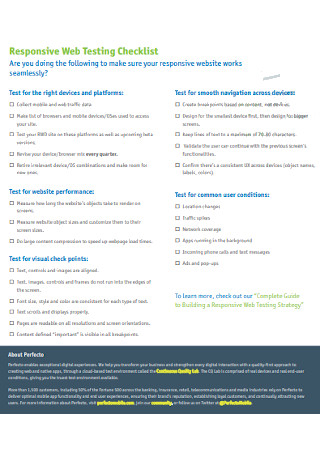
Responsive Web Testing Checklist
download now -

Manual Accessibility Testing Checklist
download now -
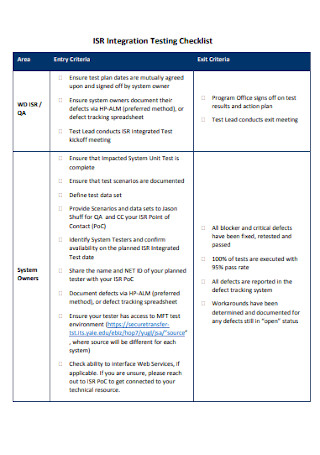
Integration Testing Checklist
download now -
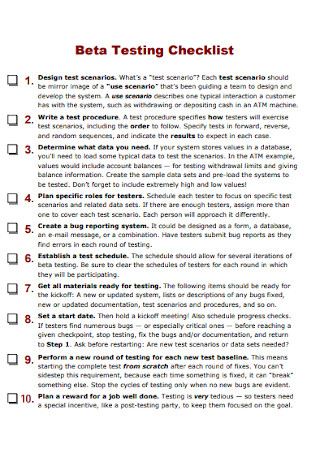
Beta Testing Checklist
download now -
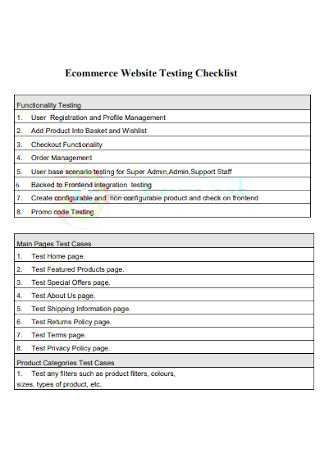
Ecommerce Website Testing Checklist
download now -

Mobile Application Testing Checklist
download now -
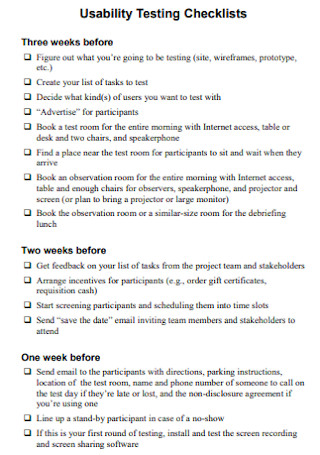
Usability Testing Checklists
download now -
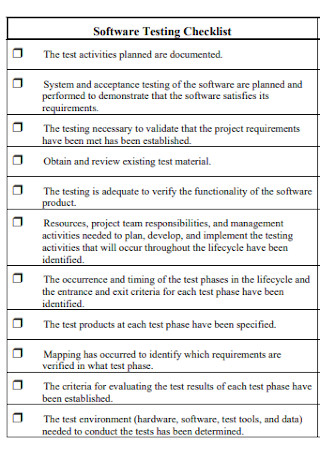
Software Testing Checklist
download now -
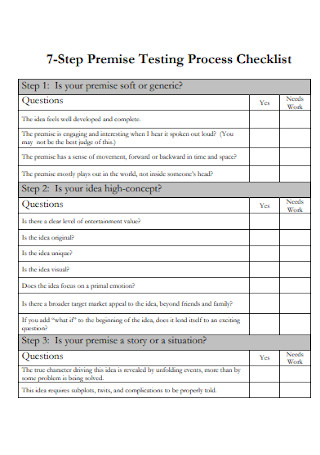
Premise Testing Process Checklist
download now -
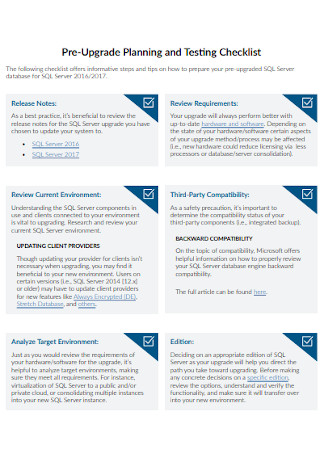
Pre-Upgrade Planning and Testing Checklist
download now -
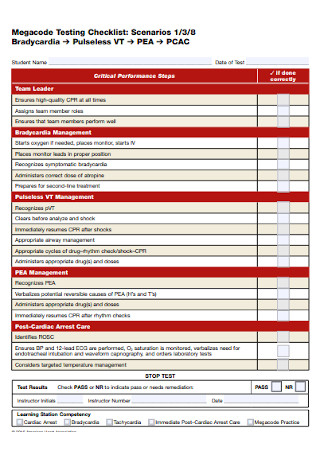
Megacode Testing Checklist
download now -
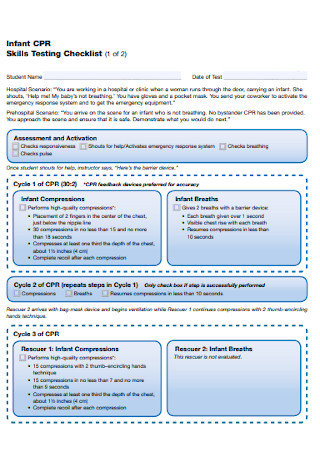
Skills Testing Checklist
download now -
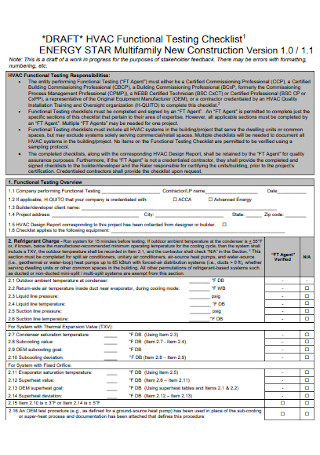
Functional Testing Checklist
download now -
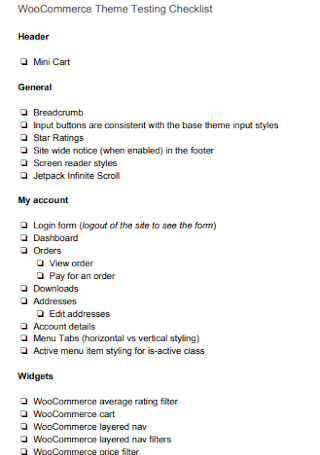
Commerce Theme Testing Checklist
download now -
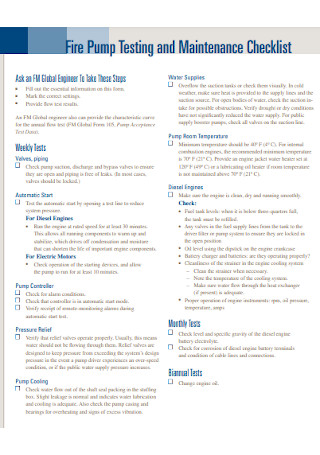
Testiing and Maintanance Checklist
download now -
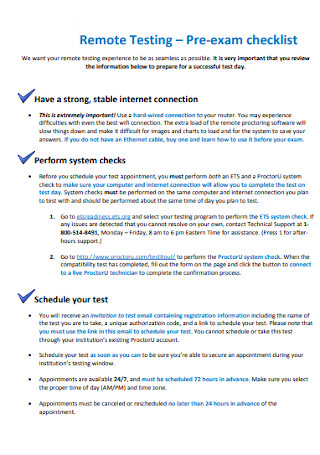
Remote Testing Pre-exam Checklist
download now -
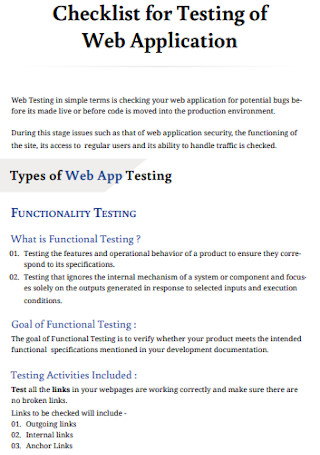
Checklist for Testing of Web Application
download now -

Standard System Testing Checklist
download now -
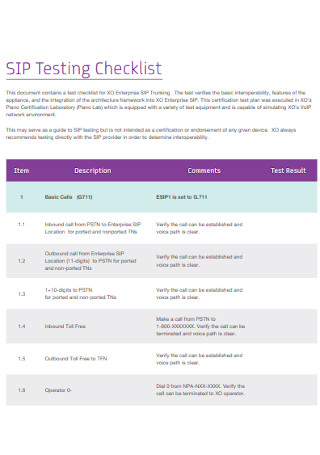
SIP Testing Checklist
download now -
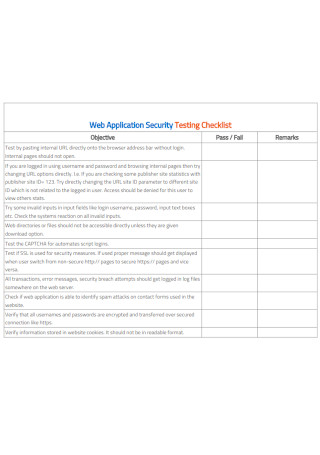
Web Application Security Testing Checklist
download now -

Localization Testing Checklist
download now -
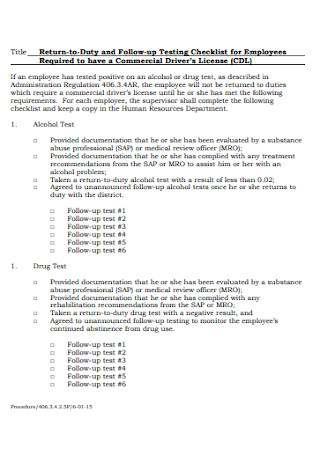
Testing Checklist for Employees
download now -
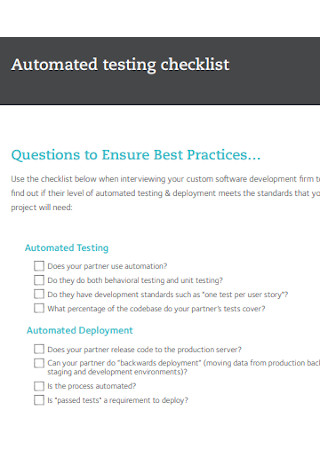
Automated Testing Checklist
download now -
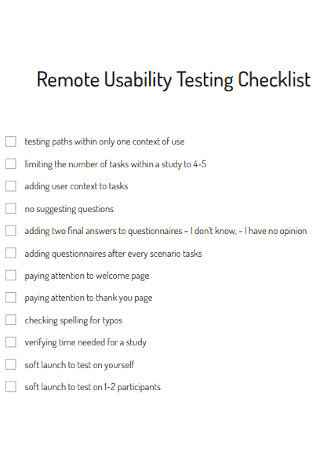
Remote Usability Testing Checklist
download now -
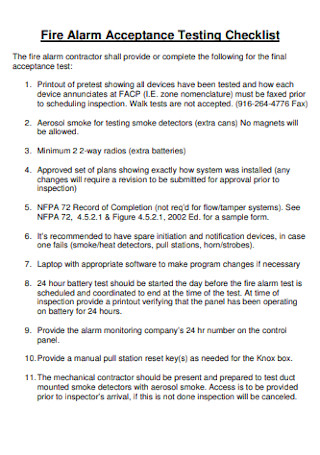
Fire Alarm Acceptance Testing Checklist
download now -
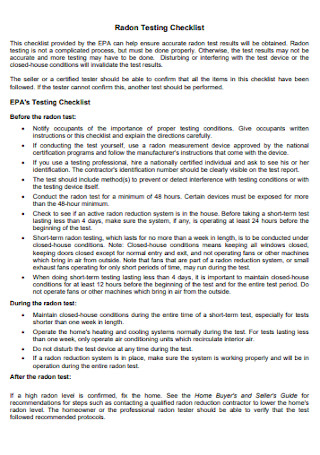
Radon Testing Checklist
download now -
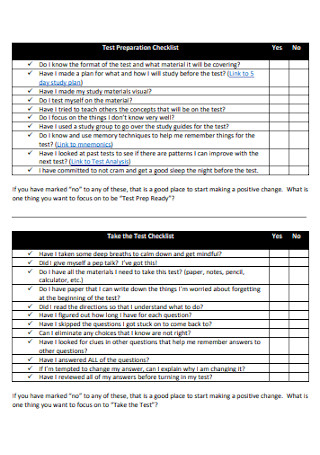
Test Preparation Checklist
download now -
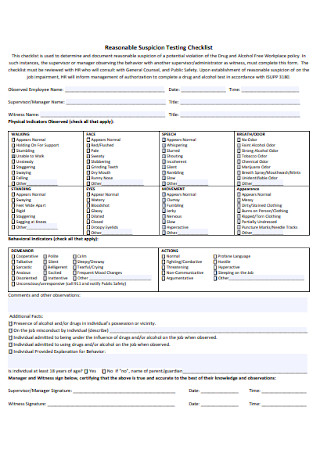
Reasonable Suspicion Testing Checklist
download now -
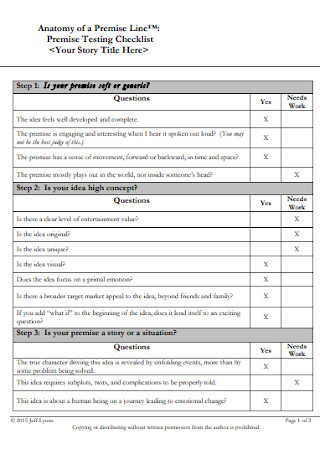
Premise Testing Checklist
download now -
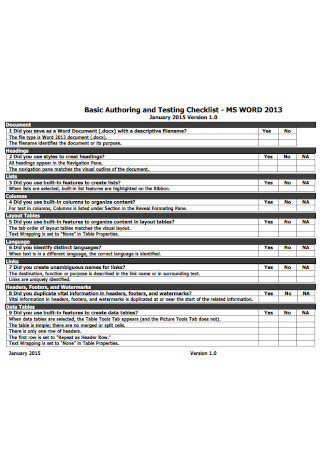
Basic Authoring and Testing Checklist
download now -
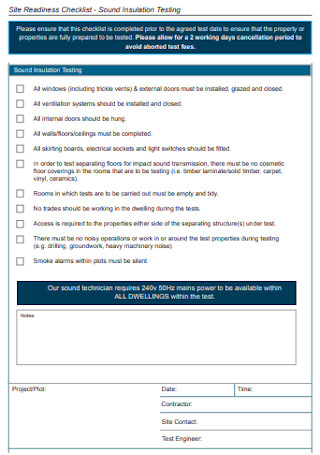
Site Testing Checklist
download now -
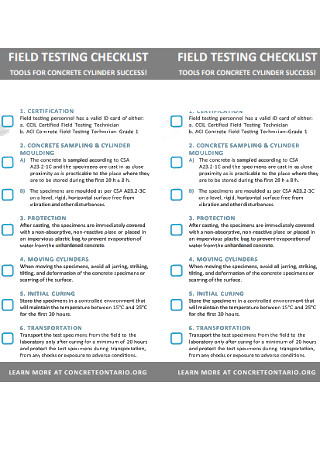
Field Testing Checklist
download now -
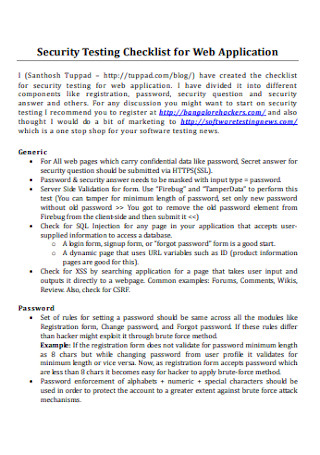
Testing Checklist for Web Application
download now -
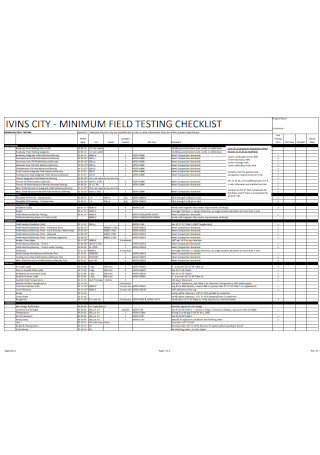
Minimum Field Testing Checklist
download now -
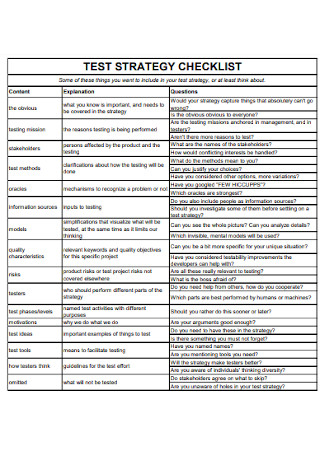
Test Strategy Checklist
download now -
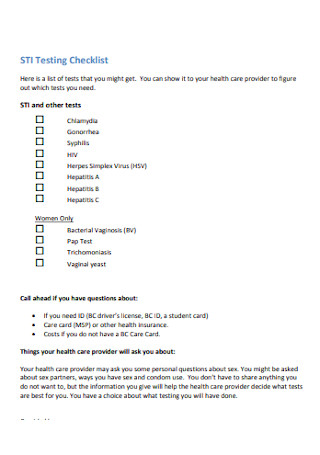
Sample Testing Checklist Template
download now -
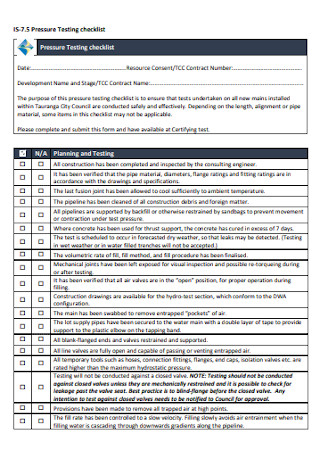
Pressure Testing Checklist
download now -
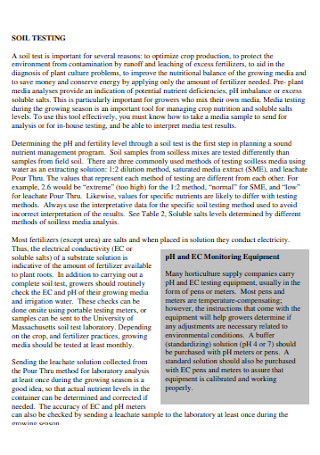
Checklist for Soil Testing Template
download now -
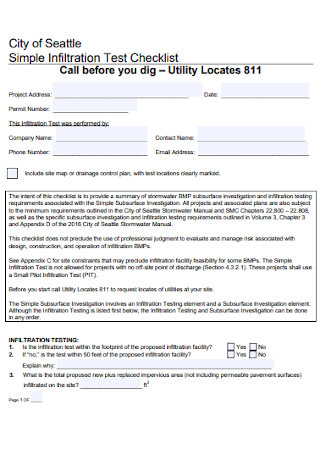
Simple Infiltration Test Checklist
download now -
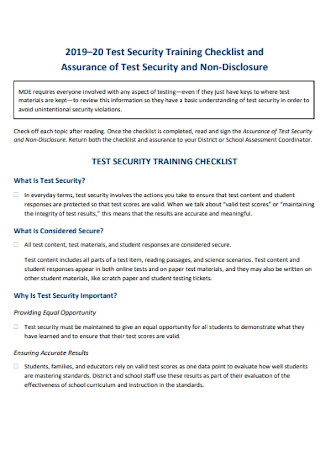
Test Security Training Checklist
download now -

Megacode Testing List
download now -

Test Day Checklist Template
download now -
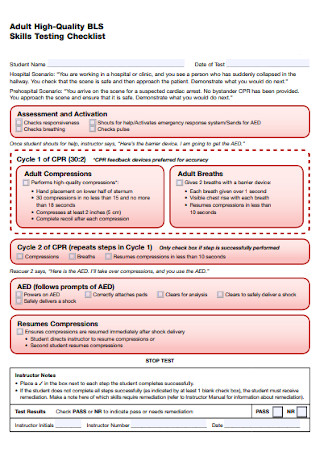
Sample Skills Testing Checklist
download now -
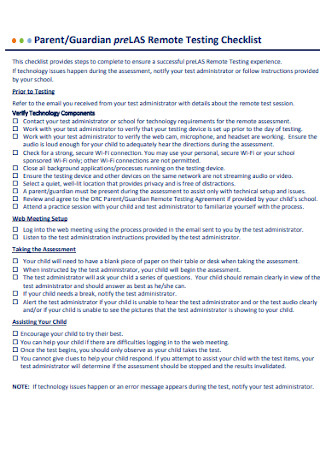
Guardian Remote Testing Checklist
download now -

Alcohol Testing Checklist Template
download now -
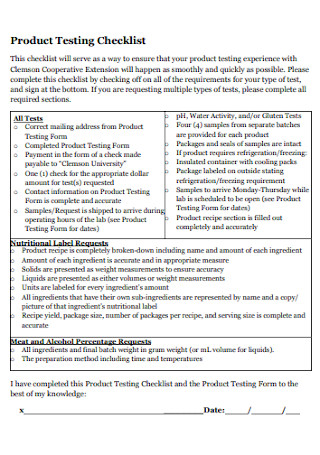
Product Testing Checklist
download now -
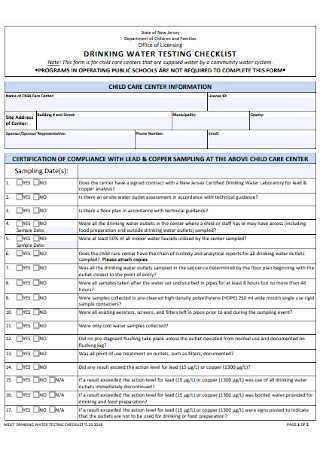
Drinking Water Testing Checklist
download now -

Molecular Testing Pharmacy Checklist
download now -
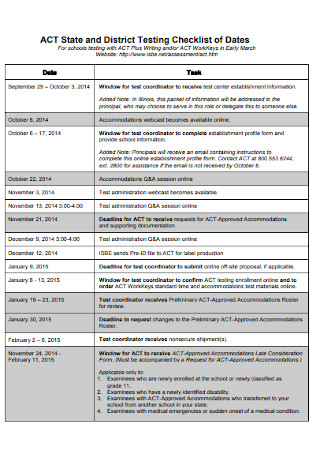
District Testing Checklist of Dates
download now -
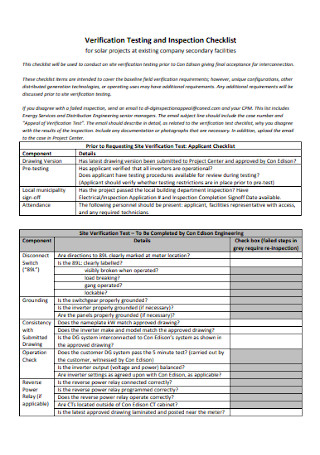
Testing and Inspection Checklist
download now -
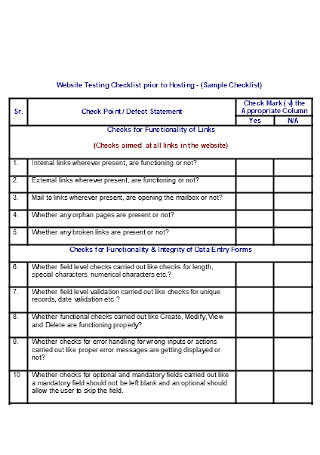
Website Testing Checklist Template
download now
FREE Testing Checklist s to Download
50+ Sample Testing Checklists
What Is a Testing Checklist?
What Makes Testing Checklists Important?
What Are the Basic Parts of a Testing Checklist?
How to Create a Testing Checklist
FAQs
What are the four main types of testing?
What are the basic steps for software testing?
What are the known principles of testing?
What Is a Testing Checklist?
A testing checklist is a type of compliance checklist that works in two ways: to verify if a product meets all the expected features enlisted in the checklist and to measure if the product has any errors. Testing checklists are essential tools when it comes to making sure a unit, software, environment, or any product of concern is being evaluated. Then, any item that passes the standards of a testing checklist will mean that that specific item is ready to be sold or used by the public.
Studies have shown that 88% or 9 out of 10 spreadsheets were said to have errors.
What Makes Testing Checklists Important?
A checklist itself is easy to understand by having an itemized list and some checkboxes to mark upon checking, but why should there be a checklist for testing purposes? Here are the important reasons to consider testing checklists:
To Check Product Performance and Features
A toy company that is about to sell a high-tech robot that moves according to command wouldn’t simply put those products in stores without actual tests conducted if the robots actually function properly. That is a decent scenario where you can think of how important a testing checklist is, which is to act as a compliance tool or performance checklist in checking if the features and performance of a product were met or not. Testing checklists guide you on how to guarantee that products meet the standard requirements and work as intended.
To Measure Possible Mistakes
Indeed, you can’t always guarantee that everything is perfect because even with documents, Forbes reported that 88% or 9 out of 10 spreadsheets are littered with errors. So in the concept of products, software, and equipment, you deserve a testing checklist to report if there are mistakes found in the process. Testing checklists can even help you keep track of the ups and downs of a product, which would be crucial if you’ll be asked to make a product report.
To Improve Products with Errors
Bear in mind that a testing checklist is more than just reporting or criticizing a product of concern; the process eventually aims to determine ways on how to improve erred products. Of course, if a product is flawed, you don’t simply keep it flawed. Determining the errors will make it easier to develop an improvement plan until top-quality products are sure to be the promised result.
To Develop Personalized Criteria
A single testing checklist contains various levels of detail, and the best part is that the criteria are personalized. Remember that the criteria used for the SaaS testing checklist won’t be the same criteria used for a manual security testing checklist. The appropriate set of criteria per purpose is observed whether you opt to formulate a software testing checklist, functional testing checklist, website user acceptance testing checklist, etc.
To Evaluate According to Standards
Testing checklists aren’t mere personal compliance tools because they also follow specific standards from the school, company, government, or business. Like an evaluation sheet, the standards meant to be followed won’t be forgotten in using a testing checklist. Just follow the guidelines and instructions in the checklist whether you are a student, employee, or any professional and testing will run a smooth sail shortly.
What Are the Basic Parts of a Testing Checklist?
There is no specific type of testing checklist that works for all testing purposes; it should be customized according to the product’s features, company standards, and main purposes. Nonetheless, the standard testing checklists usually contain the following key elements:
How to Create a Testing Checklist
Since you were already properly introduced to the testing checklist’s definition, importance, and basic elements, then you are fully ready to come up with an agile testing checklist. As long as you are committed to making sure a product, software, or any item will be maintained in the best way possible, be sure to apply these steps while making a testing checklist:
Step 1: Recognize the Purpose of Testing
First things first, what are you testing and why is there a need to test it in the first place? Understand your reason to conduct a test because you might end up making a testing checklist for the wrong reasons such as planning a computer recovery testing checklist yet the outcome ends up as a database testing checklist. Hence, come up with a strategic plan for drafting your testing checklist until making the actual checklist, later on, runs along smoothly.
Step 2: Customize a Free Testing Checklist Sample
Gone are the days you worry about creating testing checklists from scratch because premade and editable testing checklist templates are here to save the day. Simply explore the many sample templates available in this post and pick the specific sample you want to customize. Then, you can change the format, layout, and overall design of the template to make the output suit your preferences; try it now!
Step 3: Consider the Standards
What are your school, organization, or company’s standards for a product or subject of concern? Follow them while making the criteria and measuring scale of your testing checklist. That way, you will be confident that your testing checklist goes according to the standard product business plan and is not simply up for your subjective lists of criteria.
Step 4: Insert the Rest of the Testing Checklist’s Elements
Of course, you can’t ignore the other key elements of a testing checklist such as the title, tested by, testing date, product name, and the rest of the parts discussed earlier in this article. Those parts are needed to complete a standard testing checklist anyway. At the same time, there is room to add more relevant elements to the testing checklist may it be a company letterhead, a test shifting schedule, and other concerns.
Step 5: Organize the List of Procedures
Organizing a testing checklist is the key to making the process easy during the actual testing process. An example is when you group the internal components of a computer into one category of criteria and another category grouping the computer’s external components. Don’t make it difficult by having step one concerning an internal component, step two for the external component, and step three going back to the internal system; be realistic by arranging the steps on what is convenient or efficient to do.
Step 6: Commit to the Testing Checklist and Observe Carefully
Be sure to follow the instructions and procedures stated in the testing checklist once you are done making it. Then, test on different products on a regular basis may you come up with a monthly, daily, or weekly schedule for testing. Finally, identify the flaws of your checklist because it is possible that it would still need improvement after conducting an actual test; aim to improve for the best results no matter what.
FAQs
What are the four main types of testing?
These are unit testing, system testing, integration testing, and acceptance testing.
What are the basic steps for software testing?
Software testing involves requirement data analysis, test plan, test design, test environment setup, test execution, and test cycle closure.
What are the known principles of testing?
The basic principles of testing are: testing recognizes defects, an absence of errors is flawed, testing is considered context-dependent, defects group together, exhaustive testing is hard to achieve, and early testing is the best way to save money, time, and effort.
The detailed list of testing procedures, the status of verification, and the testing results of any matter of concern are all housed under a testing checklist. And since a testing checklist isn’t a one-document-fits-all type of document, be sure to optimize a sample testing checklist template and make it original to align it with your objectives. Download a sample now!
